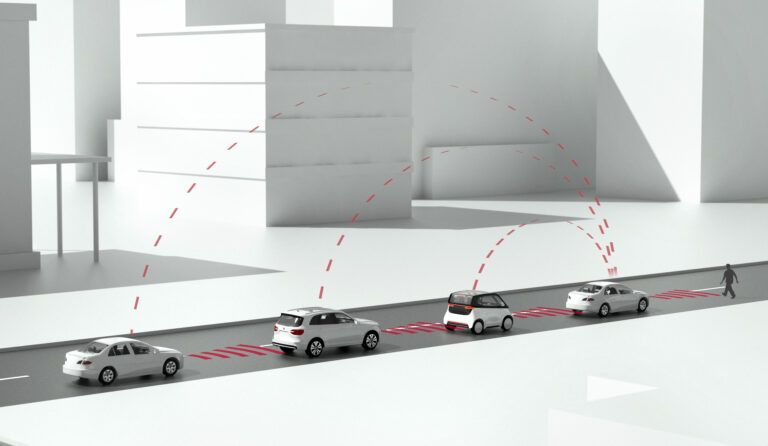FEV, a vehicle and powertrain developer for hardware and software, is leading the way in the use of co-simulation for automated driving by utilizing the Distributed Co-Simulation Protocol. This is the first use of this new protocol for automated driving features, which serves as valuable enabler in the effective development of connected and automated vehicle systems.
Automated driving features – in particular connected vehicles – contain unique development challenges. Collaborative systems offer significant safety advantages through direct communication with nearby vehicles, for instance to see through physical obstacles and predict nearby movements before they happen. However, the highly complex and unpredictable environment in which these systems operate include new challenges for development and validation.
“Collaborative embedded systems (CES) in vehicles create new challenges such as increased security risks and heightened performance requirements to enable safe and effective operation in dynamic and unpredictable environments,” said Elmar Börner, Senior Group Director for ADAS (advanced driver assistant systems) and AD (automated driving systems) development at FEV. ”The unpredictable operating conditions for such systems present a nearly limitless combination of potential use cases, which makes comprehensive physical testing impractical.”
To master these challenges, a virtual test environment empowered by co-simulation is required. The term “co-simulation” refers to a virtual development approach that integrates multiple simulation tools, enabled by a co-simulation master such as FEV’s real-time software for virtual experimentation: xMOD. Traditionally, the model inputs can be compiled and directly imported from slave applications e.g. through the Functional Mock-up Interface (FMI). However, certain models, such as the 3D environmental models developed in tools like CARLA, are bound to their executing platform and thus cannot be imported into a co-simulation master.
To address this challenge, FEV has utilized the new Distributed Co-Simulation Protocol (DCP) for time-synchronized execution of models on distributed platforms. DCP support in xMOD enables easy integration of new simulation models and even hardware into co-simulations that are incompatible with previous integration methods. Using DCP allows (a) definition of operating models hard real-time, soft real-time, or non-real-time and (b) the combination with existing model exchange solutions. Finally, this allows complex cyber-physical simulations, like multiple collaborating vehicles in a common 3D environment, controlled via CES.
“Virtual testing is mandatory for automated driving applications since on-road validation is not feasible,” said Börner. “Complex cyber-physical system simulations and co-simulators plays a key role for virtual testing, and FEV is proud to be the first user of the DCP co-simulation standard within an automated driving context globally. Our approach enables the user to integrate and handle different simulation platforms available on the market and to deal with the highly dynamic situations occurring in real traffic environments.”
In addition to enabling the use of cutting-edge simulation tools, this approach provides a method for complex simulations to handle and adapt to dynamic situations such as different traffic and environment situations or dynamically changing collaborative system groups.





